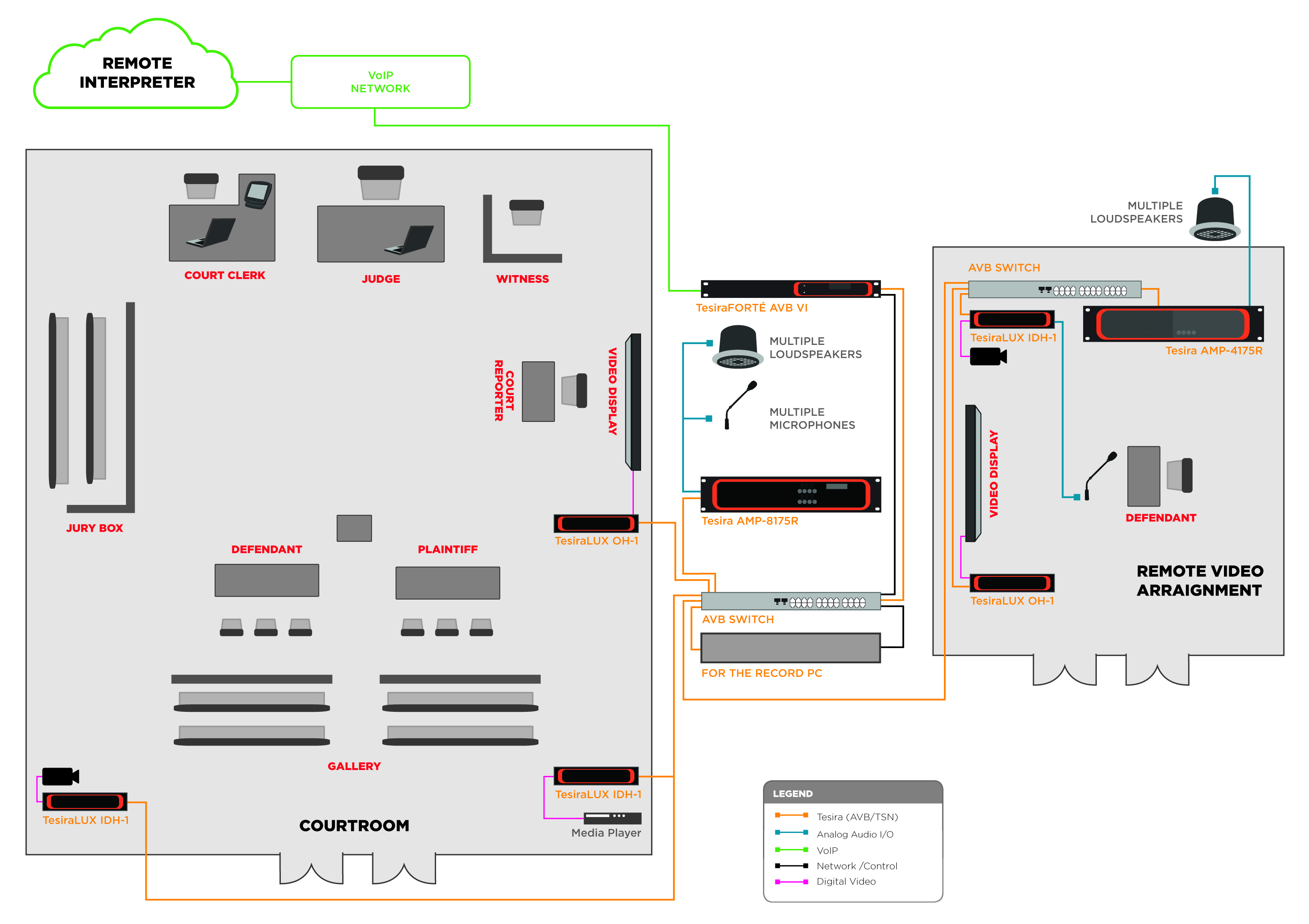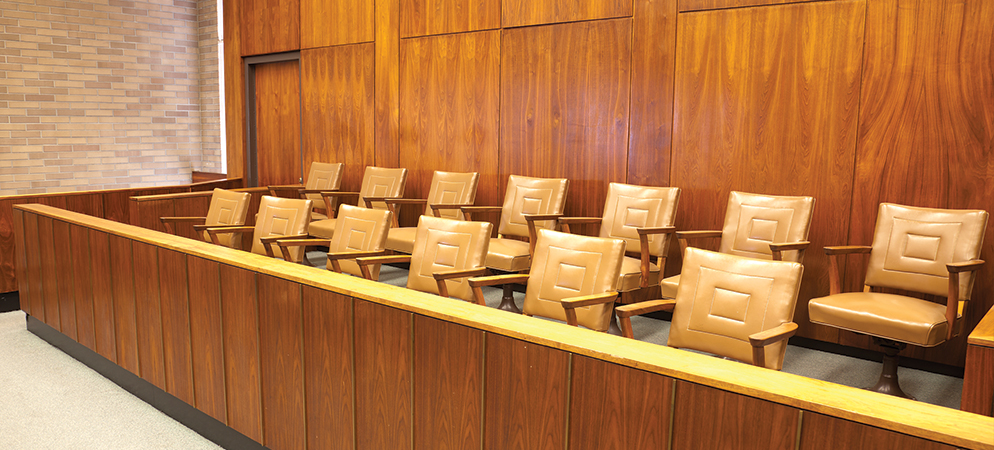Courts face a variety of challenges to their goal of meting out justice in a timely fashion. Tight budgets, an increasingly diverse population, and difficulties maintaining a secure courtroom environment are common concerns. Remote video arraignment helps mitigate some of these issues, though.
Remote arraignment reduces physical transportation costs and avoids scheduling delays by letting courts conduct routine proceedings while a defendant is at a detention or correctional facility within the same building. It also reduces the potential for courtroom disruptions and violence by keeping the defendant separated from their accuser(s). With the addition of TesiraLUX, the Tesira platform is uniquely positioned to provide legal professionals with exceptional audio and video to help them do their jobs accurately, effectively, and safely.

In this scenario, Tesira provides the audio and video processing for both the courtroom and remote arraignment room. The mic/line inputs on the TesiraLUX IDH-1 eliminate the need for an additional input endpoint in the arraignment area. VoIP connectivity enables the capability for remote testimony and interpretation, further streamlining cases by allowing courts to interact with qualified personnel without incurring travel costs or increasing logistical coordination. The AVB/TSN card installed in the PC running For The Record software allows all of the courtroom and remote arraignment audio to be recorded for transcription later.
Download a copy of this government design guide, and stay tuned to Component for future system design guides.
